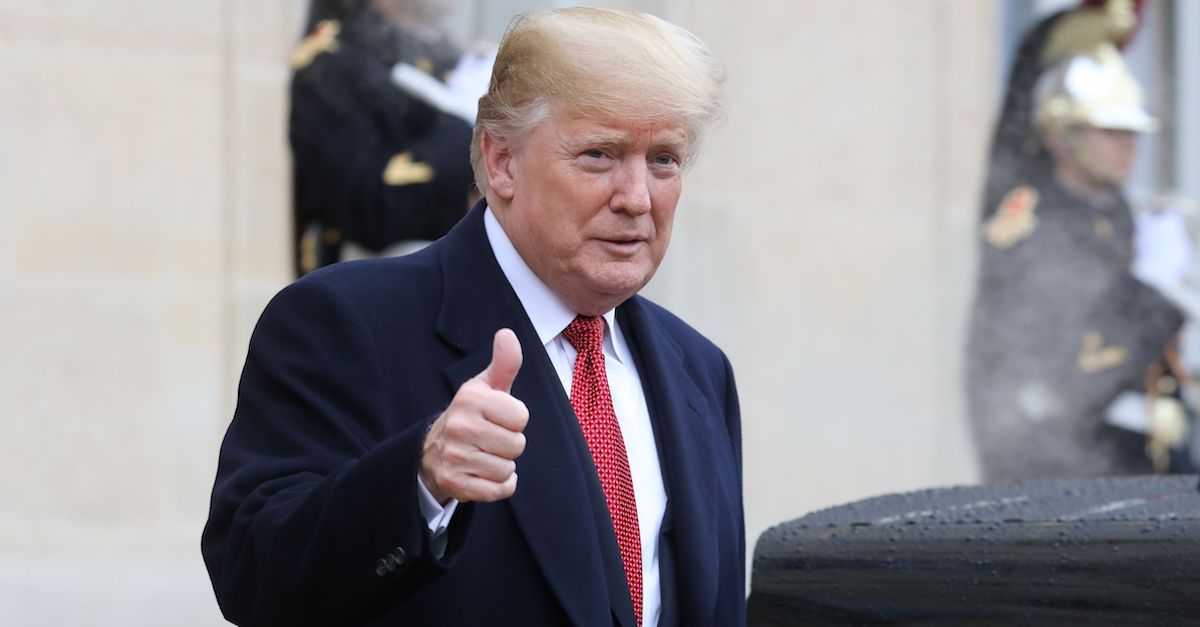
Clinton did it for the people of Burma. Bush did it for the people of Belarus. Obama did it for the people of Burundi. Trump does it for the people of America. Guess who Democrats object to the use of emergency powers for?
What is the first obligation of the federal government under the Constitution? To secure and provide for the “common defense.” To accomplish this, Congress gives the President plenary authority to declare a national emergency under 50 USC § 1621. If Congress disagrees, it can pass a joint resolution terminating the emergency under 50 USC § 1622. USC §1631 only requires the President to invoke the specific emergency powers he intends to use. Then you have 33 USC § 2293, which says that the emergency “may require use of the Armed Forces.”
One of the main groups of the Armed Services is the Army Civil Engineering Corps, which spends most of its time and personnel building domestic projects needed for the civil defense of the country and the security of the people. Indeed, their mission is to “deliver vital public and military engineering services … to strengthen our Nation’s security.” Those claiming military funds can never be used for domestic construction (e.g., #Wall) apparently missed that the Army Corps of Engineers have been doing domestic construction for decades as their mission is “military engineering services…to strengthen our Nation’s security.”
Congress even passed a law codified and titled “construction authority” in the event of a declaration of “emergency.” Another statute explicitly authorizes the President to “apply the resources of the Department of the Army’s civil works program” including funding originally intended for “construction, operation, maintenance, or repair” of other civil works projects to funding the “construction, operation, maintenance and repair” of other “civil defense projects” or “civil works” needed “to the national defense.” How is building a border wall not a“civil defense project” when border walls have been the foundation of civil defense for literally tens of thousands of years since the beginning of civilization?
Historical precedent also supports the President as much as the express language of the legislative text. The Continental Congress frequently passed emergency acts. As scholars and studies alike affirm, “the granting of emergency powers by Congress is implicit in Article I, section 8 authority to provide for the common Defense.” An emergency merely means “a resulting state that calls for immediate action.” Congressional hearings recognized it as “the existence of conditions of varying nature, intensity and duration” merely sufficient that they are “perceived” to “threaten well-being beyond tolerable limits.” Eminent Constitutional scholars admitted it means an “existing danger to life or well-being beyond that which is accepted as normal.”
George Washington himself used emergency powers. Abraham Lincoln employed it repeatedly. Teddy Roosevelt championed it. FDR employed it more often than anybody. Harry Truman and Richard Nixon both applied it. After Congress codified it in 1976, Jimmy Carter gladly used it. Every President since employed it, including both George W. Bush and Barack Obama more than a dozen times apiece, with over 30 national emergencies still in force, some since 1979. Almost all of them stripped Americans of property or a right to property, restricted cross-border movement of people or property, and employed both American military and policing powers domestically.
Even Trump haters acknowledge the broad discretion of the President’s emergency powers. Even the critical legal blogosphere acknowledged Trump’s broad discretionary authority in using emergency powers. Coequally, Congressional Service studies repeatedly reaffirm the broad Constitutional and Congressionally-provisioned emergency powers of the Presidency. The non-partisan Congressional Research Service acknowledge the long legal history of Presidents using emergency powers. “Federal law provides” for “national emergency powers” which “are not limited to military or war situations” and “are continuously available to the President with little or no qualification.” Indeed: Thirty of the national emergencies declared via the National Emergencies Act since 1976 are technically still in effect.
Equally, plans for physical structures along the border date to World War II. Congressional legislation over the decades “established a mandate” that provided the President “with broad authority to waive all legal requirements that may impede construction of barriers” to secure the border. Even the nonpartisan Congressional Research Service acknowledged “nothing in current statute would appear to bar DHS from installing hundreds of miles of additional physical barriers along the U.S.-Mexico border, even beyond the 700 miles required by law.”
Bill Clinton declared more than a dozen national emergencies, as did Obama. If Burundi & Burma can be protected by the President’s national emergency powers, why can’t the American people?
[Image via LUDOVIC MARIN/AFP/Getty Images]
This is an opinion piece. The views expressed in this article are those of just the author.